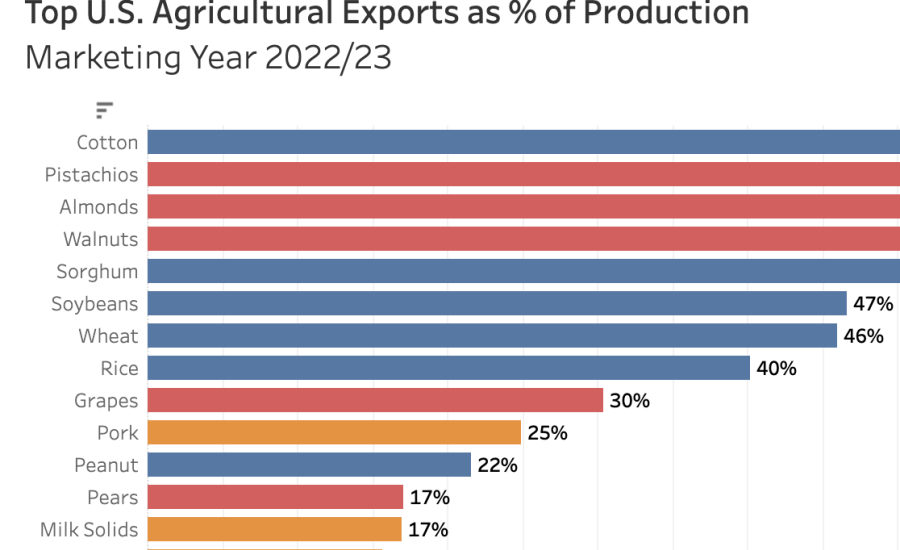Browse Data and Analysis
Filter
Search Data and Analysis
- 192 results found
- (-) Fruits and Vegetables
- (-) May 2024
- (-) 2016
- Clear all
U.S. agricultural exports are a critical source of farm income. The USDA Economic Research Service estimates that on average 23 percent of the output of nonmanufactured agricultural products were exported between 2013 and 2022.
New Zealand’s apple planted area in the 2023/2024 market year (MY) is forecast to be 9,200 hectares (ha), a substantial drop from 11,000 ha at the start of the 2022/2023 MY. This is due to the impacts of Cyclone Gabrielle, which brought large-scale floodwaters, silt, debris, wind, and surface flooding to the primary apple growing regions of Hawkes Bay and Gisborne.
The cold and wet winter of 2023 provided favorable conditions for deciduous fruit and aided in improved production volumes. Production is expected to grow and improve in quality from MY 2022/23 when fruit was affected by hail damage.
Food Standards Australia New Zealand (FSANZ) has approved a Queensland University of Technology (QUT) application to permit food derived from a banana line genetically engineered (GE) for resistance to Panama disease.
Vietnam offers abundant opportunities for exporting consumer-oriented products, despite the challenges of recovering from the COVID-19 pandemic and dealing with high inflation. The Vietnamese economy is poised for significant expansion in the coming decades. With a burgeoning population and a growing middle class, Vietnamese consumers are becoming more discerning about the origin and composition of their food.
The 2023 U.S. Agricultural Export Yearbook provides a statistical summary of U.S. agricultural commodity exports to the world during the 2023 calendar year.
In marketing year (MY) 2023/24, higher than normal temperatures early in the winter and a slow accumulation of chilling hours caused a delay in the harvest, and subsequently a delay in export shipment, of most deciduous fruit.
Israel’s citrus planted area in MY 2016/17 was 18,910 hectares (ha), 590 ha less than the planted area in MY 2015/16.
Argentina continues to be the third largest producer of biotech crops, producing 14 percent of the world´s total biotech crops.
China is the world’s largest importer of genetically engineered (GE) crops and one of the largest producers of GE cotton in the world, but it has not yet approved any major GE food crops...
South China imports of U.S. soybeans continue to climb….Upcoming opportunities for U.S. exporters to meet with South China wine and beer importers, as well as wood importers…
For CY 2017, production of all three types of citrus fruit is forecast to decrease below normal levels due to unfavorable weather conditions in the main citrus growing regions of Argentina.

